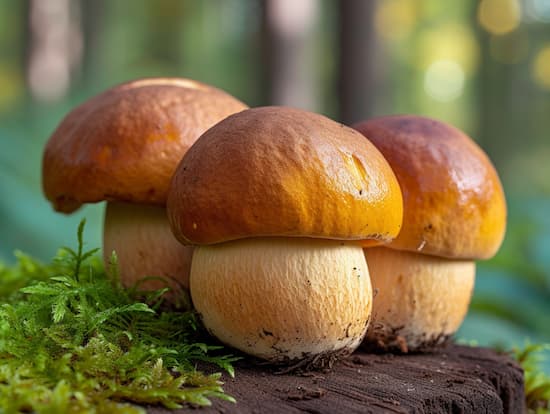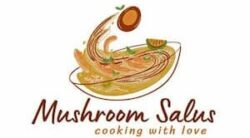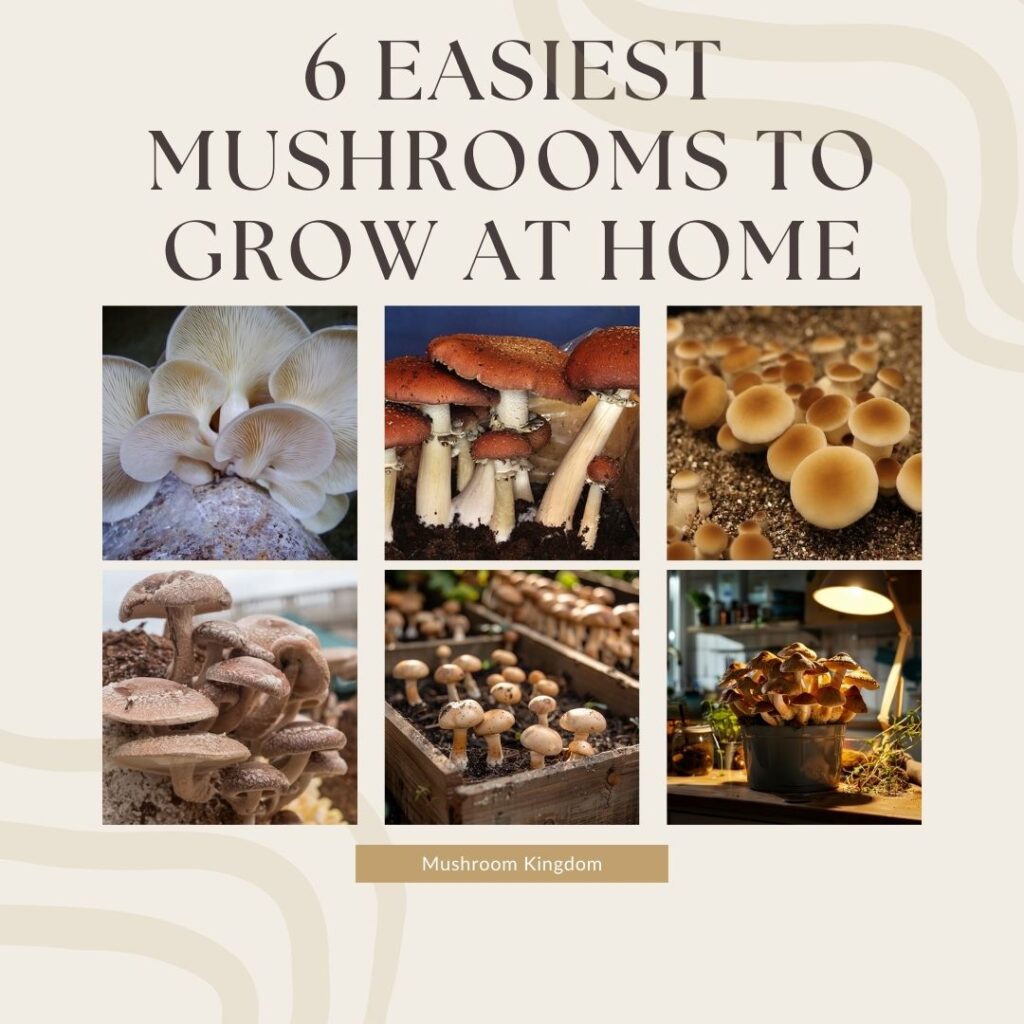Porcini mushrooms (Boletus edulis), also known as king bolete, penny bun, or cep, are prized for their rich flavour and culinary versatility.
Here are some interesting facts about how you can identify them in the wild, the healthy benefits of consuming them regularly as well as some of the popular ways of cooking them.
How To Identify Porcini Mushrooms?
Identifying porcini mushrooms (Boletus edulis) involves recognizing several distinct characteristics. Here’s a guide to help you identify them safely:

Key Identification Features
- Cap (Pileus)
The cap is initially convex and becomes more flattened with age. It typically measures 7–30 cm in diameter. The colour ranges from light brown to dark reddish-brown and may have a slightly sticky surface when fresh. The cap surface can be smooth to slightly wrinkled.
- Pores and Tubes (Hymenophore)
Instead of gills, porcini have a spongy layer of tubes and pores. The pores are initially white, turning yellowish-green as the mushroom matures. They do not change color when bruised.
- Stem (Stipe)
The stem is stout, often bulbous at the base, and can be 8–25 cm tall and 3–10 cm thick. It is white to pale brown, often with a slightly darker reticulated (net-like) pattern on the upper part. The surface can be smooth or slightly fibrous.
- Flesh
The flesh is white and does not change color when cut or bruised and the texture is firm and danced.
- Odor and Taste
Porcini mushrooms have a pleasant, nutty aroma. They have a mild, nutty flavor when raw. Always taste a tiny amount when foraging to confirm edibility, but be sure to spit it out.
Where Do Porcini Mushrooms Grow?
Porcini mushrooms are predominantly found in temperate and boreal forests throughout the Northern Hemisphere. This includes Europe, North America and Asia.
The prime season for foraging porcini is from late summer through autumn. This timing can vary slightly depending on local climate and weather patterns.
- Europe: Widely distributed across central and southern Europe, from the British Isles to Italy and from Portugal to Eastern Europe. It is common in the northern regions, particularly in Tuscany, the Apennine Mountains, and the Alpine regions.
- North America: Found in both eastern and western parts, including areas like the Pacific Northwest, the Rocky Mountains, and the forests of the northeastern United States and eastern Canada.
- Asia: Common in parts of East Asia, including China, Japan, and Korea.
In the wild, Porcini mushrooms are commonly associated with pine, spruce, and fir trees. They also thrive in forests where coniferous and deciduous trees coexist. Less commonly, they can be found under broadleaf trees such as beech, chestnut, and oak.
They prefer well-drained, slightly acidic soils. Thus, you can often find it in areas with sandy or loamy soil. Ideal conditions include warm, moist summers and cool, wet autumns.
How To Distinguish Porcini From Look-Alikes?
Some toxic Amanita species, like the Death Cap (Amanita phalloides), can resemble young porcini. Amanitas have white gills and a volva (a cup-like structure at the base), which porcini do not have.
The other similar one is Bitter Bolete. This mushroom has a similar appearance but has a bitter taste. It has a pinkish pore surface and a darker net-like pattern on the stem.
Some Leccinum species bruise blue or black, whereas porcini flesh remains white.
Is Porcini Edible Mushroom?
Yes, porcini mushrooms (Boletus edulis) are indeed edible and highly prized for their culinary value. They have rich, nutty, and earthy flavor, which intensifies when dried. Due to their firm and meaty texture, they are a perfect addition to various dishes.
Fresh porcini can be sautéed, grilled, or roasted. They are often used in pasta dishes, risotto, soups, and stews. Dried porcini have a concentrated flavour and are commonly rehydrated and used in sauces, soups, and broths. The soaking liquid is also used to enhance the flavour of dishes.

Full Recipe: Porcini mushroom risotto
When preparing porcini, clean the mushrooms to remove dirt and debris. Avoid soaking them in water, as they can absorb moisture and become soggy. Also, do not forget to trim any tough or damaged parts before cooking.
Porcini Mushrooms Health Benefits
Porcini mushrooms have numerous health benefits. Here are some of the key ones:
Nutrient-Rich
Porcini mushrooms are an excellent source of essential nutrients including vitamins (such as B-complex vitamins like riboflavin, niacin, and pantothenic acid), minerals (such as potassium, zinc, and selenium), dietary fibre, and protein. They are low in calories, making them a nutritious addition to various dishes.
Antioxidant Properties
Porcini mushrooms are rich in antioxidants, which help combat oxidative stress in the body. This can help protect cells from damage by free radicals, potentially reducing the risk of chronic diseases like cancer and heart disease.
Anti-Inflammatory Effects
The bioactive compounds found in porcini mushrooms, such as ergothioneine and polyphenols, have anti-inflammatory properties. This can help reduce inflammation in the body, which is linked to numerous health conditions including arthritis and inflammatory bowel disease.
Boost Immune System
Porcini mushrooms contain beta-glucans, a type of polysaccharide that can enhance the immune system by stimulating the activity of immune cells like macrophages and natural killer cells. This can help the body defend against infections and diseases.
Digestive Health
The high fiber content in porcini mushrooms aids in digestion by promoting regular bowel movements and supporting a healthy gut microbiome. Fiber also helps prevent constipation and can contribute to overall gastrointestinal health.
Heart Health
Porcini mushrooms have compounds that can support cardiovascular health. The presence of dietary fiber, potassium, and antioxidants can help lower blood pressure, reduce cholesterol levels, and improve overall heart function.
Anti-Cancer Potential
Some studies suggest that the compounds in porcini mushrooms may have anti-cancer properties. Antioxidants and other bioactive compounds can help prevent the growth and spread of cancer cells.
Bone Health
They also contain good amounts of vitamin D, which is essential for calcium absorption and bone health. Adequate intake of vitamin D can help prevent bone-related disorders such as osteoporosis.
How To Cook Porcini Mushrooms
Cooking porcini mushrooms is a delightful way to bring out their rich flavour and tender texture. Here’s a basic method for cooking porcini mushrooms:
- Cleaning: Start by gently cleaning the porcini mushrooms to remove any dirt or debris. Use a soft brush or a damp paper towel to wipe the caps and stems. Avoid rinsing them under running water as mushrooms tend to absorb water, which can affect their texture and flavor.
- Preparation: Trim off any tough or discoloured parts of the mushrooms. If the porcini mushrooms are large, you can slice them into uniform pieces for even cooking.
- Sautéing: Heat a skillet or frying pan over medium heat. Add a small amount of olive oil or butter to the pan. Once the oil is hot, add the porcini mushrooms to the pan in a single layer, ensuring they are not overcrowded.
- Seasoning: Season the mushrooms with salt and pepper to taste. You can also add minced garlic, chopped herbs (such as thyme or rosemary), or shallots for additional flavor.
- Cooking: Allow the porcini mushrooms to cook undisturbed for a few minutes until they start to brown on the bottom. Then, gently toss or stir them to ensure even cooking. Continue to cook for a few more minutes until the mushrooms are tender and golden brown.
- Deglazing (optional): For added flavor, you can deglaze the pan with a splash of white wine, sherry, or broth. Use a wooden spoon to scrape up any browned bits from the bottom of the pan and allow the liquid to reduce slightly.
- Finishing: Once the porcini mushrooms are cooked to your liking, remove them from the heat. You can sprinkle them with a squeeze of lemon juice or a drizzle of balsamic vinegar for a burst of acidity.
Can Porcini Be Eaten Raw?
While porcini mushrooms are highly prized for their flavour and nutritional benefits, it is generally not recommended to eat them raw.
Raw mushrooms can be difficult to digest due to their tough cell walls, primarily composed of chitin. Cooking breaks down these cell walls, making the nutrients more bioavailable and the mushrooms easier to digest.
Cooking them also enhances their rich, earthy flavour and aroma, making them more enjoyable to eat.
Some wild mushrooms contain compounds that can be toxic or irritating when consumed raw. While porcini mushrooms are generally safe, cooking them helps eliminate any potentially harmful substances and reduces the risk of adverse reactions.


